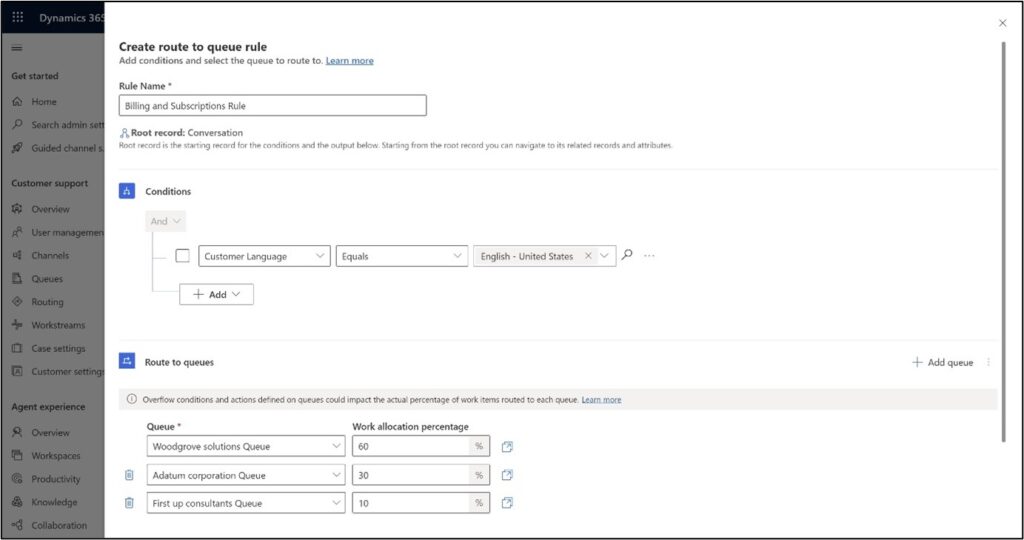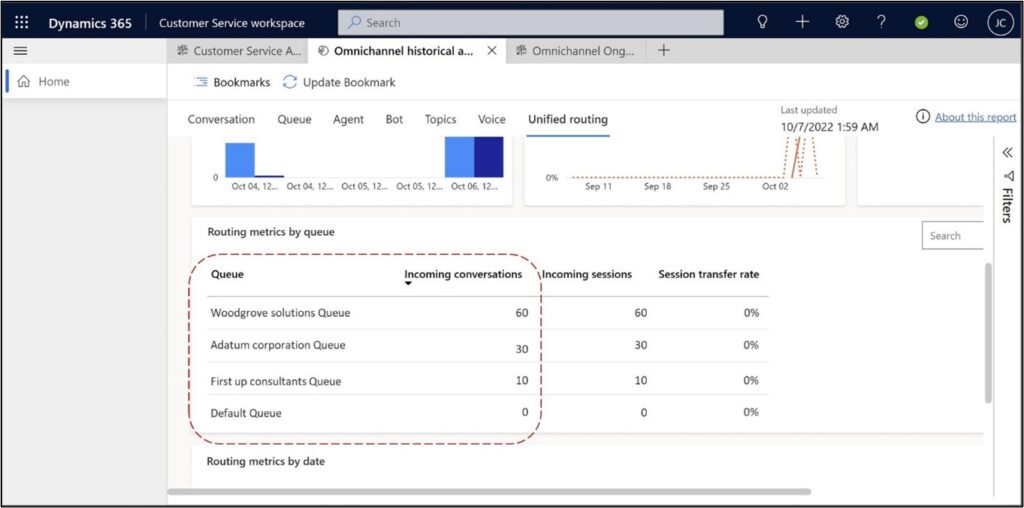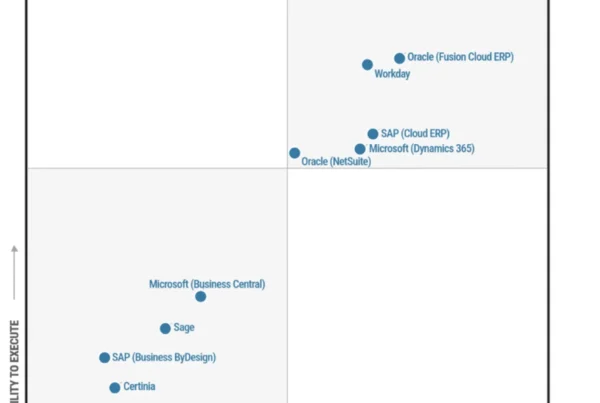Unified routing in Microsoft Dynamics 365 Customer Service provides capabilities to connect customers to the best agents. To provide a world-class customer engagement experience, around the clock and across the globe, large organizations rely on multiple vendors and expert pools. They need to balance the incoming workload across service departments, vendor queues, and their expert pools. Percentage-based routing, a new capability of unified routing, helps organizations to easily allocate work to different queues representing departments, vendors, or groups of agents in specific percentages.
How does percentage-based routing help?
Let us look at a customer scenario to understand how percentage-based routing can help your customer service organization.
Contoso Solutions is a Fortune 500 software product and services company. It has a large customer support organization covering more than 20 product lines, served by three vendors with more than 5,000 agents worldwide. Most of their customer queries are in the Billing and Subscriptions area. A single vendor team cannot handle the load. Rajeev, the director of customer support at Contoso, wants to distribute the workload across all three vendors based on each vendor’s pricing plan, quality of service, and the volume it can handle. He has come up with the following allocation:
- 60% to Woodgrove Solutions, which has consistently delivered good customer support and has offered volume-discounted pricing to Contoso
- 30% to Adatum Corporation, which has a smaller workforce but can quickly ramp up agents when Contoso releases new features
- 10% to First Up Consultants, a new vendor that Contoso wants to try out
Rajeev is looking for a solution that can help him implement the percentage-based routing easily to control customer wait times during the busy holiday season. He learns about the percentage-based routing capability in Dynamics 365 Customer Service. In the Customer Service admin center, he opens the workstream and configures a Route to Queue rule with the work allocations he devised.


From that moment, the algorithm dynamically routes every customer query from the Billing and Subscriptions area to one of the three vendor queues according to the configured percentages.
Monitor vendor queues in reports
Rajeev can check the number of customer queries that go to each vendor using the Omnichannel historical analytics insights dashboard.


Conclusion
In a world of high-volume, 24/7 customer engagement, percentage-based routing can be extremely helpful for organizations that want to efficiently manage their workload across multiple vendors and deliver delightful customer experiences to their global customer base.
Learn more
To get more information about unified routing and automated routing rules in Dynamics 365 Customer Service, read the documentation:
Overview of unified routing | Microsoft Learn
Configure route-to-queue rules | Microsoft Learn
Haven’t tried Customer Service yet? Visit the Dynamics 365 Customer Service overview, where you can take a tour and sign up for a free trial.
This blog post is part of a series of deep dives that will help you deploy and use unified routing at your organization. See other posts in the series to learn more.






